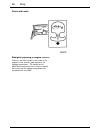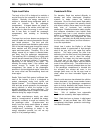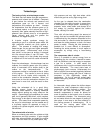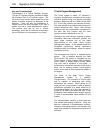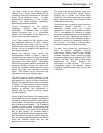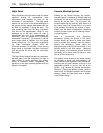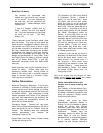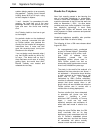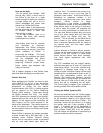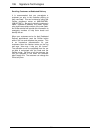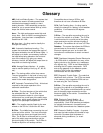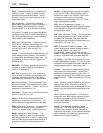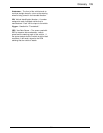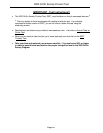
104 Signature Technologies
9-3
sudden allergic reaction to an avocado
dip appetizer. Trabolsy found himself
hurtling down M-32 at 90 mph, trying
to find a hospital in Alpena.
“I can’t ...breathe,” he remembers his wife
gasping, her head half out of the open
passenger window. Fluid poured out of her
eyes and ears. Her throat was swelling
shut.
And Trabolsy hadn’t a clue how to get
to the hospital.
He pushed a button on the dashboard
that, in seconds, connected him with
an OnStar adviser, who patched him
directly into the hospital for emergency
instructions from a nurse and then
gave him street-by-street, turn-by-turn
directions to the hospital.
“I am not being overly dramatic when I
say that OnStar saved my wife’s life,”
he says. “The doctor told us that if
there had been much more of a delay
getting there, she would have died.”
Brenda Trabolsy was treated and
released the next day.
Hands-free Telephone
New York recently passed a law banning the
use of hand-held telephones in automobiles.
OnStar’s hands-free embedded cellular phone
meets the demands of the NY law that went into
effect on November 1, 2001. As other states
consider and pass similar legislation, the hands-
free telephone technology in each Saab
equipped with OnStar will become more and
more important to Saab customers and potential
new Saab buyers.
Hands-free telephone capability also provides
another Saab Real Life level of safety.
The following is from a GM news release dated
August 22, 2001:
An unprecedented study, conducted
as part of General Motors’ “SenseAble
driving” program (a $10 million, multi-
year effort to address driver
distraction), reveals that the
embedded cellular phone used in
GM’s OnStar system has had an
outstanding safety performance record
since it was initiated five years ago.
The study is the world’s first analysis of a
database that has extensive and actual —
not estimated — information about whether
a crash occurred at the same time a cell
phone was in use. This database,
maintained by GM’s OnStar subsidiary,
consists of automated information with time
stamps that show exactly when a cell
phone voice call was initiated and when the
OnStar advisor was in contact with a
vehicle after an airbag deployment…
Previous studies that have attempted
to associate cell phone use with
crashes — including a much-
publicized 1997 University of Toronto
report — could use only small
statistical samples and estimates of
when calls were made in relation to a
crash.
Using the actual OnStar data, the GM
study concludes that an air bag
deployment crash associated with the
use of OnStar’s embedded phone
system was rare, and that the chance
an embedded cell phone actually
caused a crash was even more rare.



